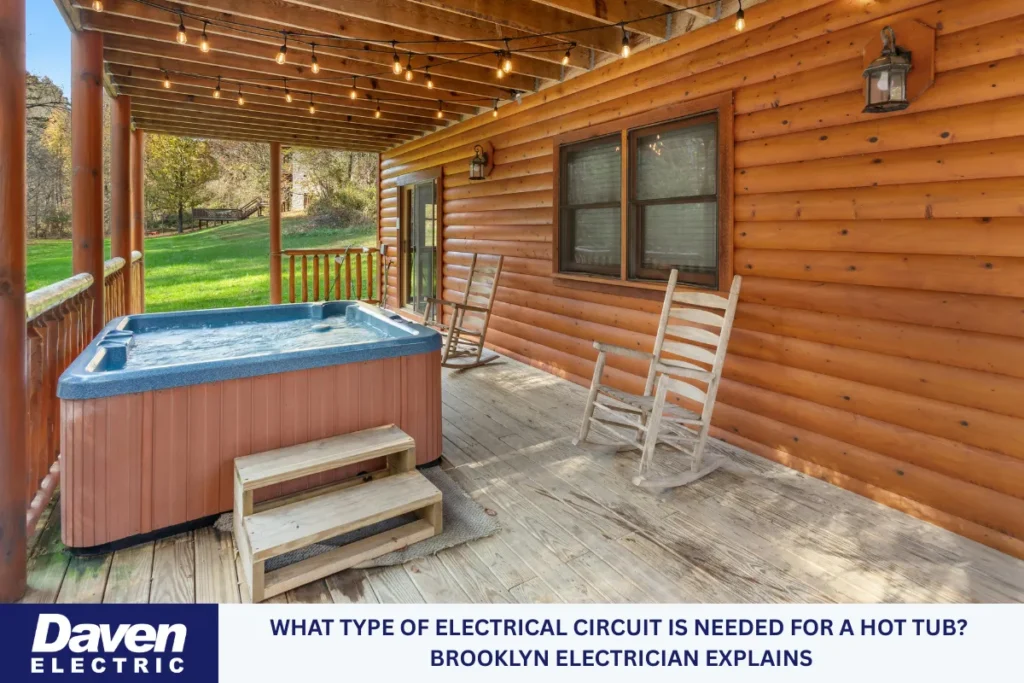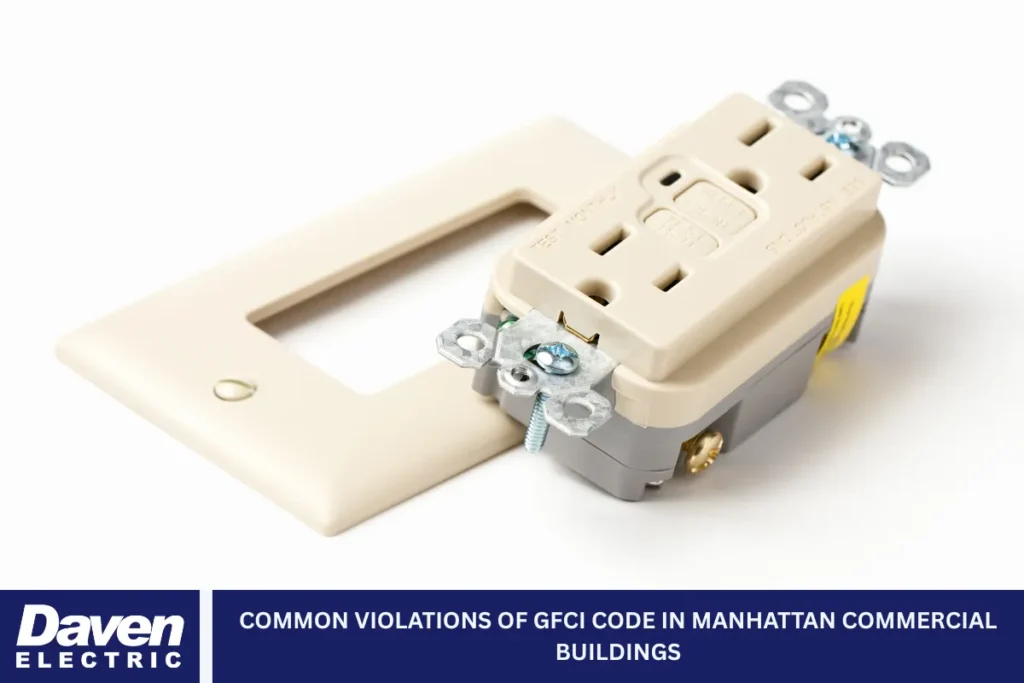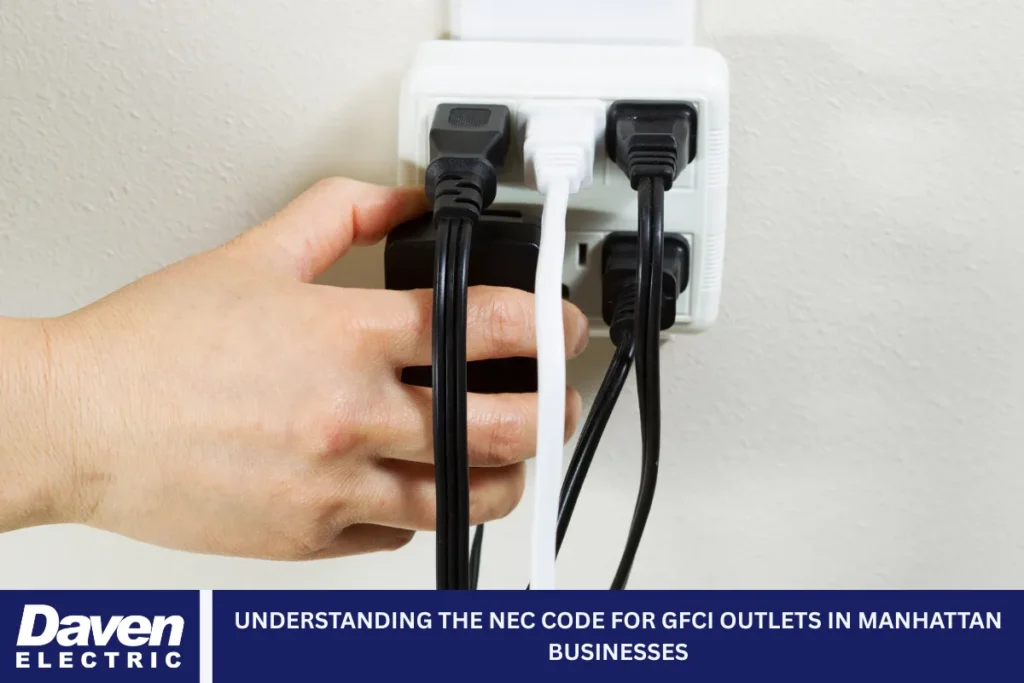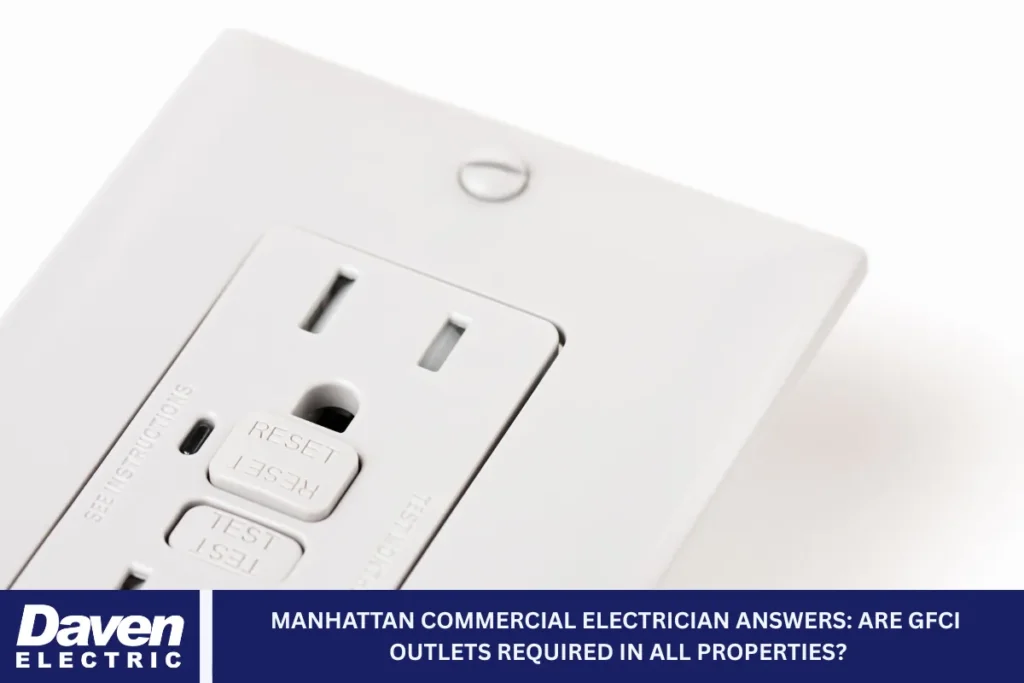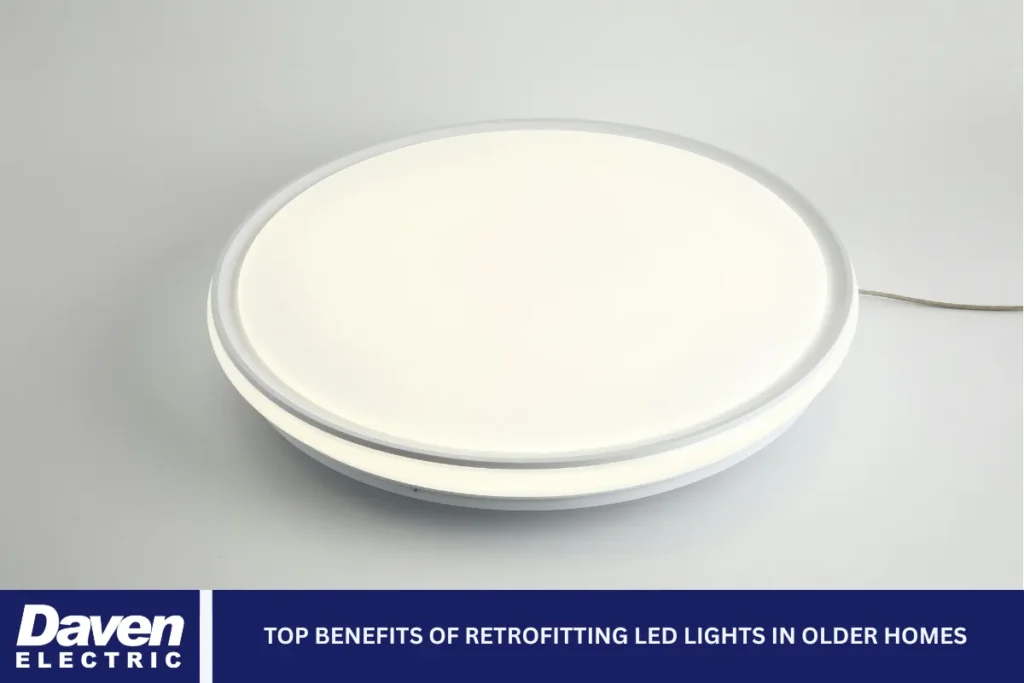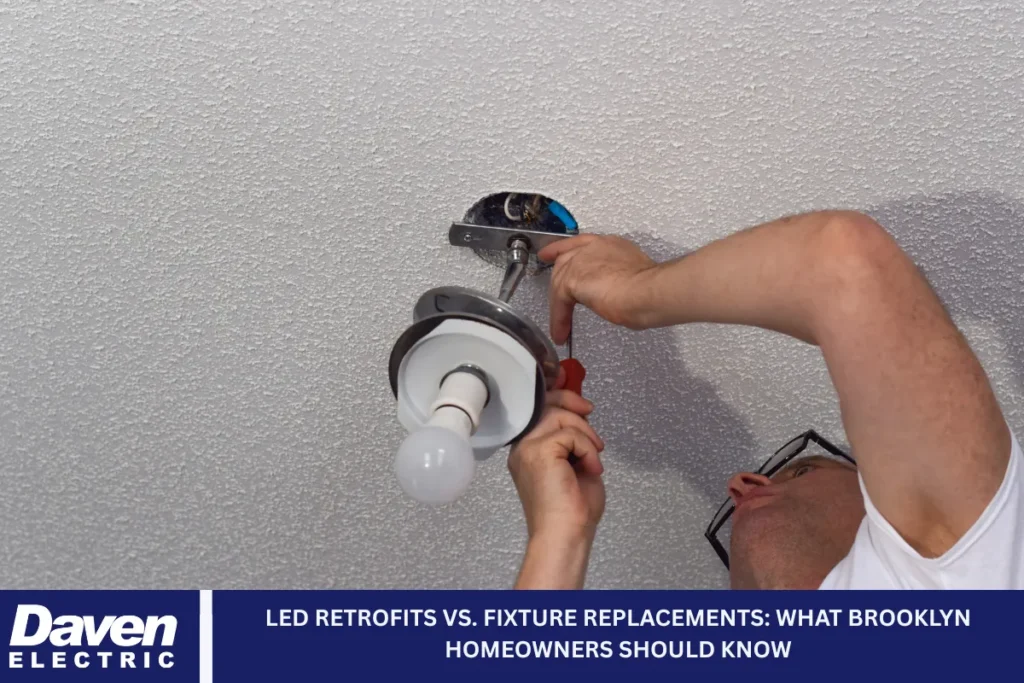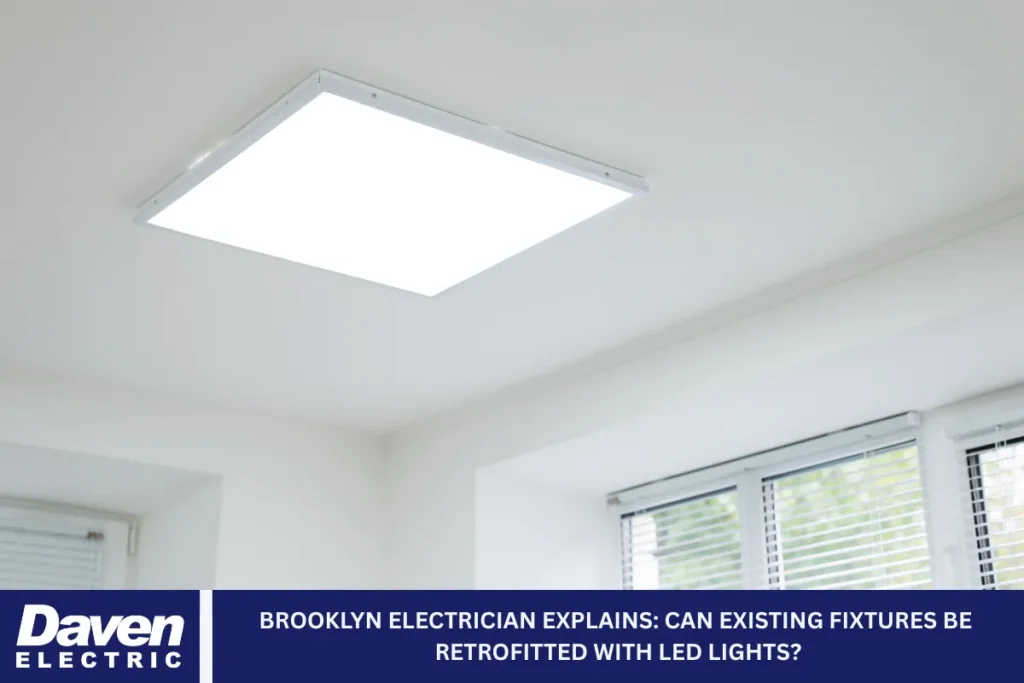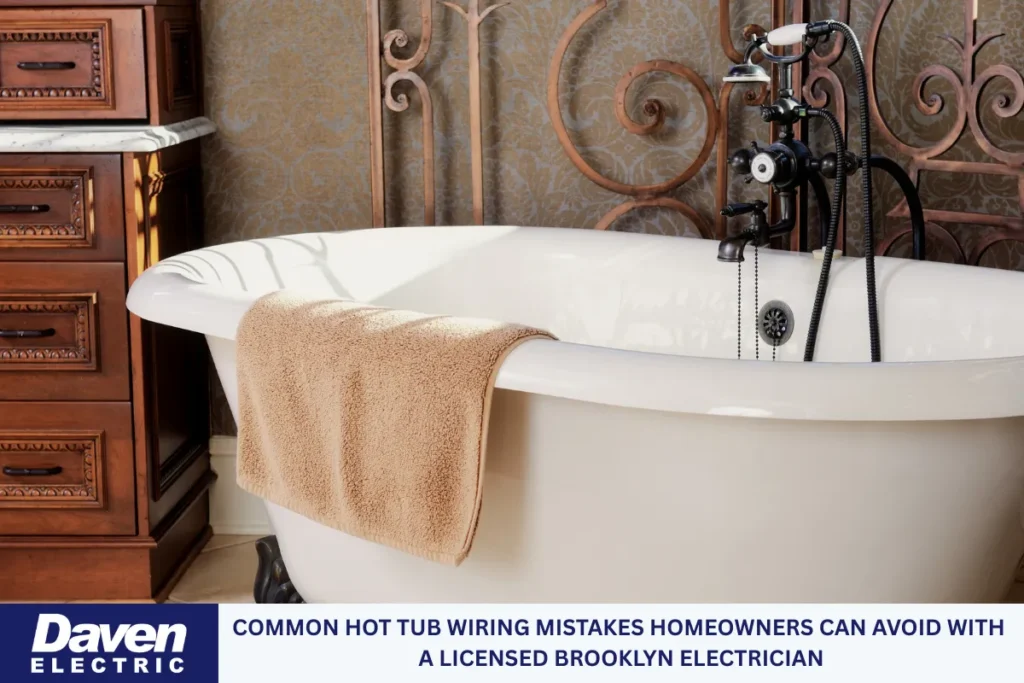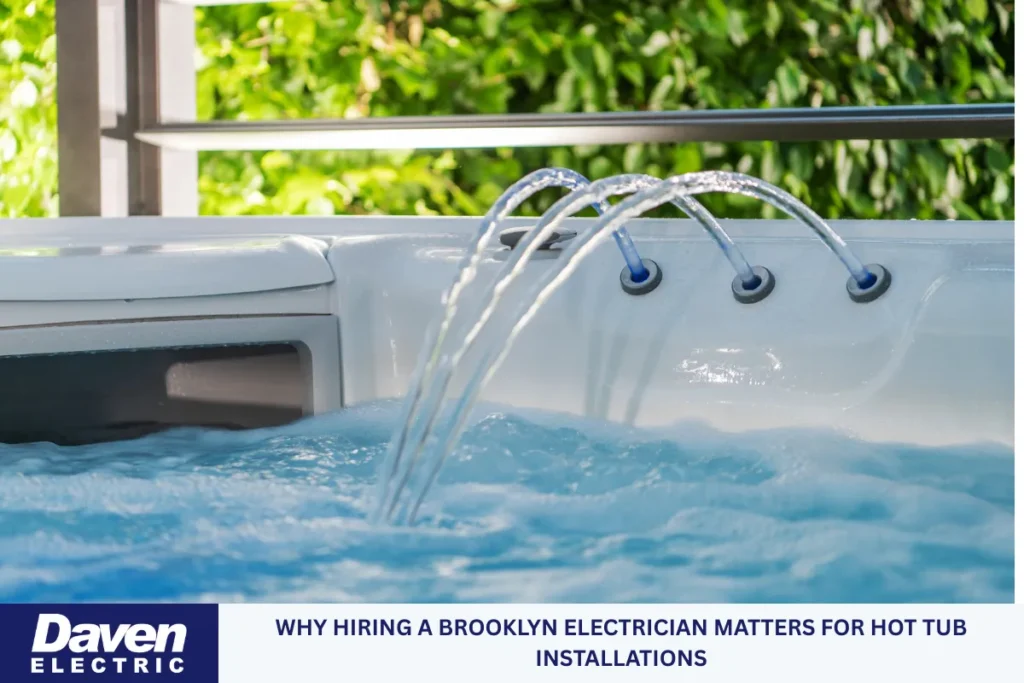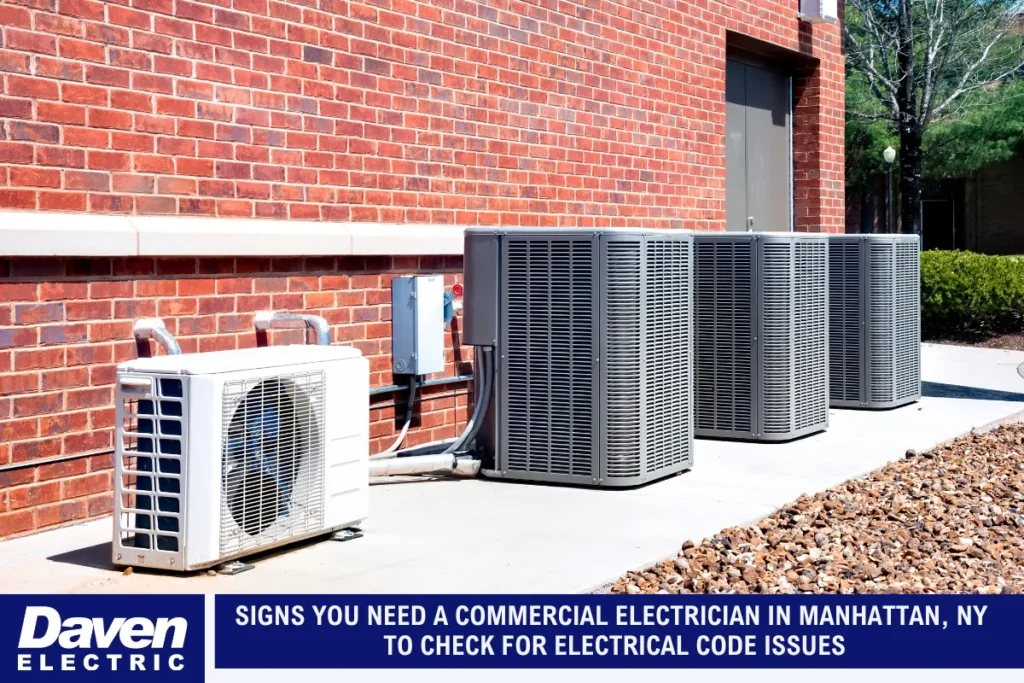A Brooklyn electrician is the best person to explain what kind of electrical circuit is needed to safely power a hot tub, especially with the strict codes and unique building challenges found across New York City’s boroughs. Installing a hot tub isn’t just about filling it with water and plugging it in. It requires careful electrical planning, the right materials, and full code compliance to ensure safety, performance, and longevity.
Whether you’re setting up a cozy corner spa or a large backyard hot tub, understanding your electrical needs is the first step to avoiding costly problems, code violations, or even safety hazards. This guide walks through all the essentials in plain language, with a focus on what matters most for homeowners in Brooklyn, NY.
Understanding Electrical Requirements for Hot Tubs
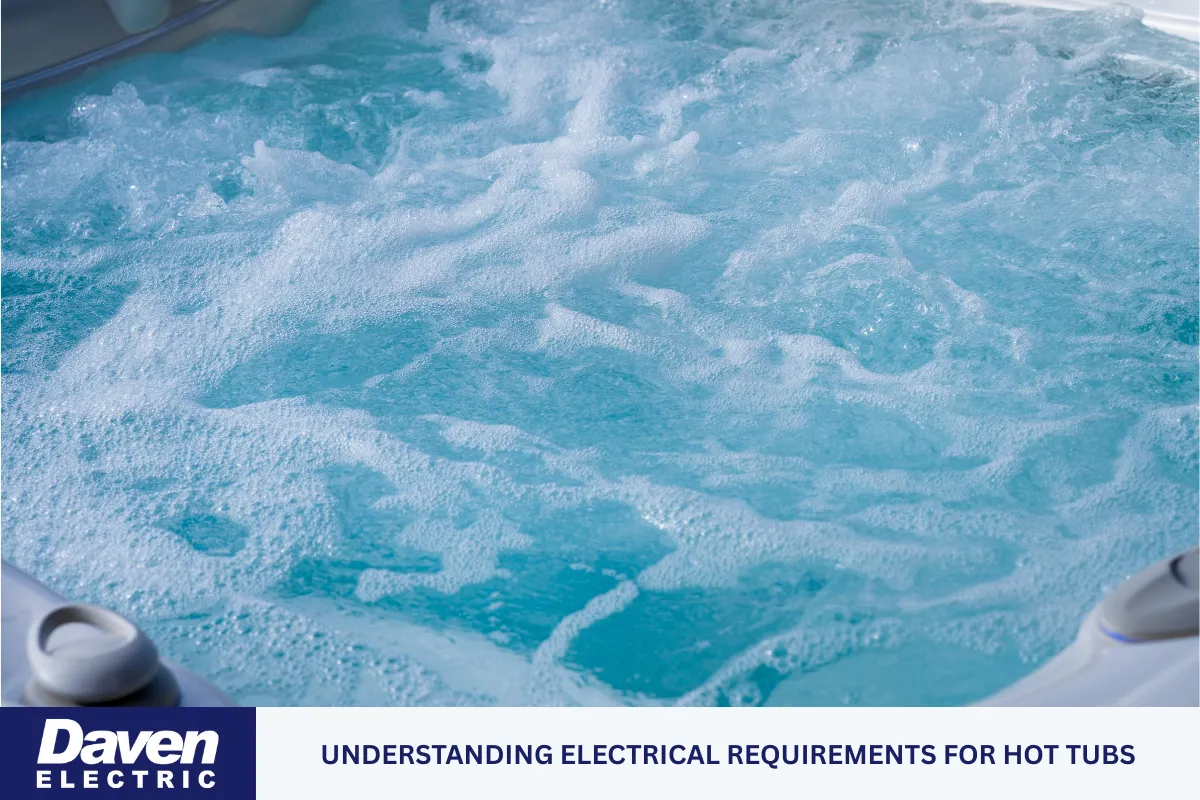
Hot tubs are high-powered appliances that require more than just a typical household outlet. They need dedicated electrical circuits because they operate heaters, pumps, lights, and filtration systems simultaneously. These systems draw significant power and must be wired properly to handle that load without overloading your electrical panel.
In Brooklyn, where building codes are stringent and most homes are older, the electrical system must be evaluated and potentially upgraded before installing a hot tub. It’s not just about connecting wires—it’s about ensuring those wires are safely grounded, properly rated, and approved for your specific location.
Plug-and-Play vs. Hardwired Hot Tubs: What’s the Difference?
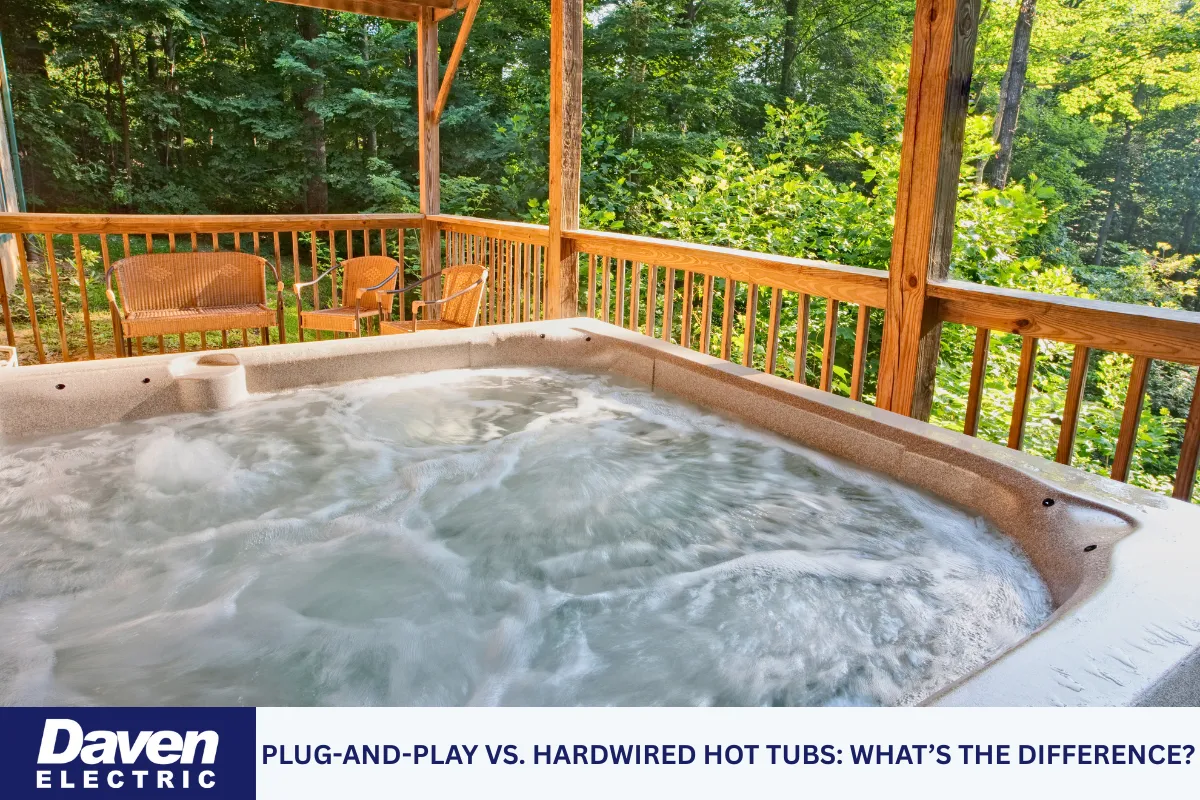
Hot tubs are generally divided into two categories based on their power needs: plug-and-play models and hardwired systems. Each comes with different installation requirements and performance characteristics.
Plug-and-Play Hot Tubs (120V Systems)
A plug-and-play hot tub operates on standard 120-volt power and can usually be plugged into a regular grounded outlet. These are smaller, more affordable models and are designed for ease of setup.
However, they come with limitations. A 120V system typically uses a 15- or 20-amp circuit, which restricts the number of features that can run simultaneously. Often, heating and water jets can’t operate together efficiently. These tubs also take longer to heat up and may struggle in colder weather—a real concern during Brooklyn winters.
Despite their ease, plug-and-play hot tubs still require a GFCI-protected outlet, and the outlet must meet local code, which in Brooklyn means outdoor, weather-resistant housing with proper grounding.
Hardwired Hot Tubs (240V Systems)
Most full-sized hot tubs require a 240-volt electrical system. These models are hardwired directly into your home’s electrical panel through a dedicated circuit, typically rated between 40 and 60 amps. This setup provides faster heating, better performance, and full access to all features like powerful jets, lights, and filtration.
A hardwired installation isn’t something a homeowner should ever attempt alone. Brooklyn code requires this work to be performed by a licensed electrician, and inspections are mandatory after installation. The job includes installing a dedicated circuit breaker, outdoor disconnect, conduit, GFCI protection, and making sure all components are rated for outdoor use and weather conditions.
Dedicated Circuits: What They Are and Why They Matter
A dedicated circuit is a single-purpose electrical line that is used only for one appliance—in this case, your hot tub. It has its circuit breaker and doesn’t share power with any other outlets, lights, or devices. This prevents power interruptions and protects your home from dangerous overloads.
For hot tubs, dedicated circuits are essential. Because of their power draw, sharing a circuit with other appliances could result in tripped breakers, overheating wires, or even electrical fires. Dedicated circuits ensure the hot tub receives a steady, uninterrupted power supply—something especially important during extended use in colder seasons.
In Brooklyn homes, where wiring can be outdated or overloaded already, the importance of adding a dedicated circuit can’t be overstated. It keeps both your hot tub and your electrical system operating safely.
GFCI Protection and Outdoor Disconnects: Non-Negotiable Safety Measures
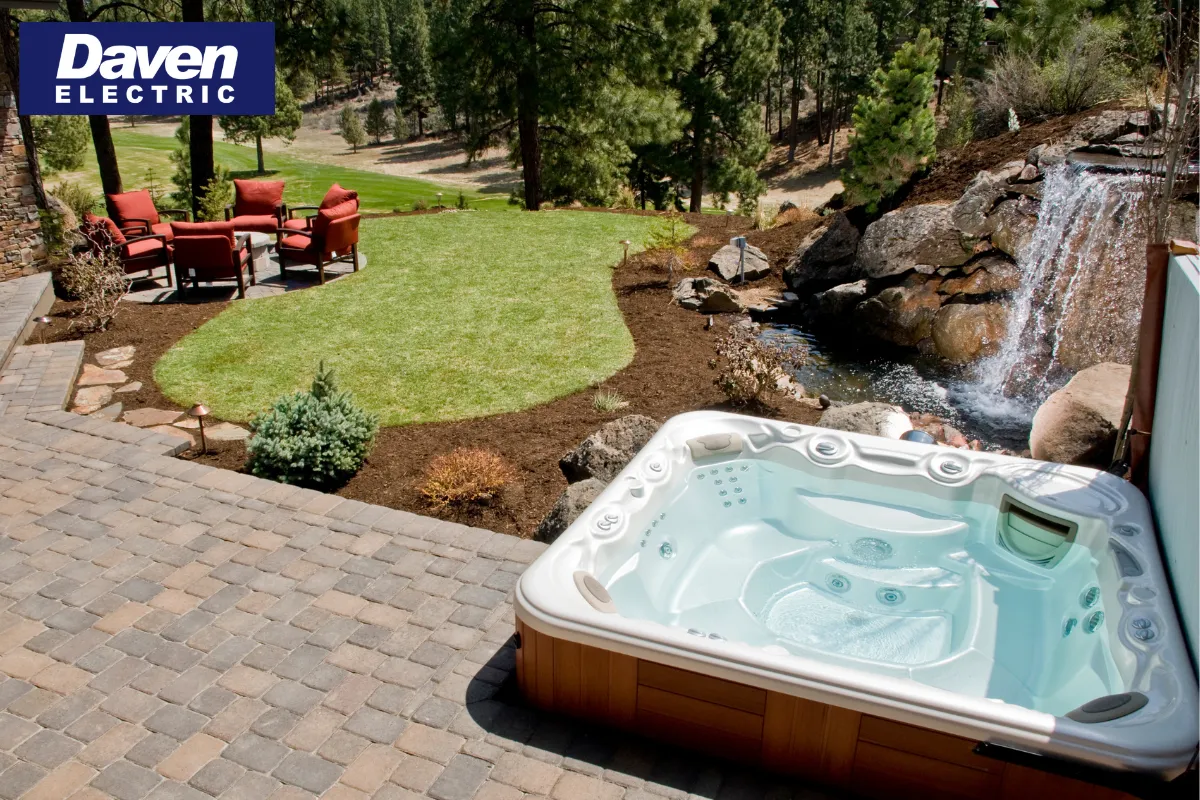
Hot tubs and electricity don’t mix without safety precautions. That’s where Ground Fault Circuit Interrupter (GFCI) protection comes into play. A GFCI device instantly cuts power if it detects any current leak, protecting you from electrocution. These are required by national and local code and must be properly installed and tested.
Alongside the GFCI breaker, Brooklyn codes require a nearby outdoor disconnect box. This box lets you shut off power quickly in case of an emergency or during maintenance. It must be installed at least five feet from the water’s edge to prevent accidental contact while in the tub. It must be weatherproof, lockable, and up to code.
These two elements—GFCI breakers and outdoor disconnects—aren’t just formalities. They’re life-saving tools built into your system to keep you safe in and around water.
Conduit, Wiring, and Weather-Resistant Components
Electrical wiring for outdoor hot tubs in Brooklyn must be fully protected from weather, rodents, and physical damage. For this reason, all wires must be enclosed in conduit. In most NYC installations, metallic conduit is required for added durability and grounding support.
Wire gauge is another critical consideration. Wire that’s too small can overheat, while unnecessarily large wire increases costs.
The correct wire gauge depends on:
- The total amperage of your hot tub
- The distance from your electrical panel to the tub
- Any voltage drop that may occur with longer runs
In general, a 50-amp 240V circuit less than 50 feet from the panel would require #6 copper wire. Longer runs may need thicker wire, such as #4 gauge. It’s all about reducing resistance and maintaining stable voltage, which keeps your equipment running efficiently and safely.
Adapting to Brooklyn’s Unique Home Structures
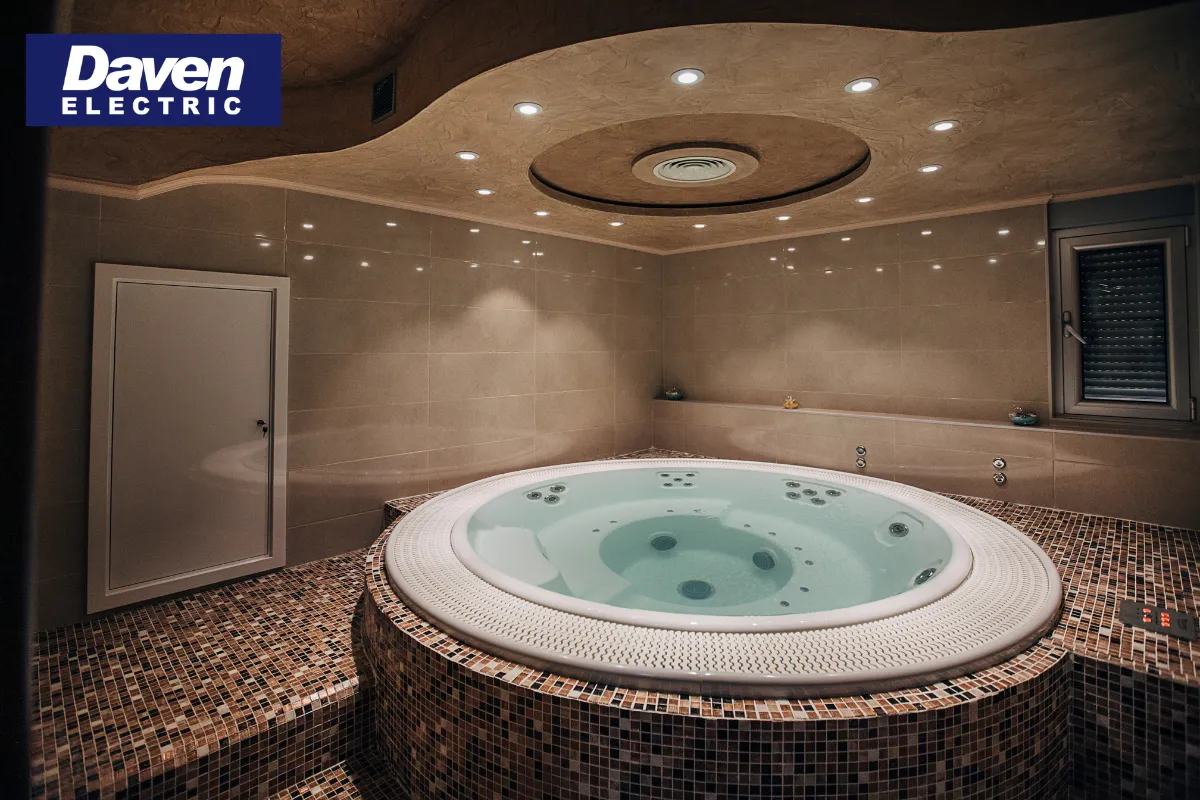
Installing a hot tub circuit in Brooklyn is rarely straightforward. Most buildings are older, and many have outdated electrical systems or cramped utility access. These challenges make professional planning and code knowledge even more essential.
Older homes may require a panel upgrade to accommodate a new 50-amp breaker. In some cases, the entire panel must be replaced if it lacks space or safety features. Electricians also have to work around narrow alleyways, brick walls, and limited rear yard access—all common features in Brooklyn architecture.
Then there’s the issue of permitting. Every electrical project involving a hot tub in NYC must be filed with the Department of Buildings and inspected upon completion. This process ensures code compliance but adds to the planning time, so homeowners should expect timelines of a few weeks from start to finish.
Step-by-Step Installation Process for Hot Tub Circuits
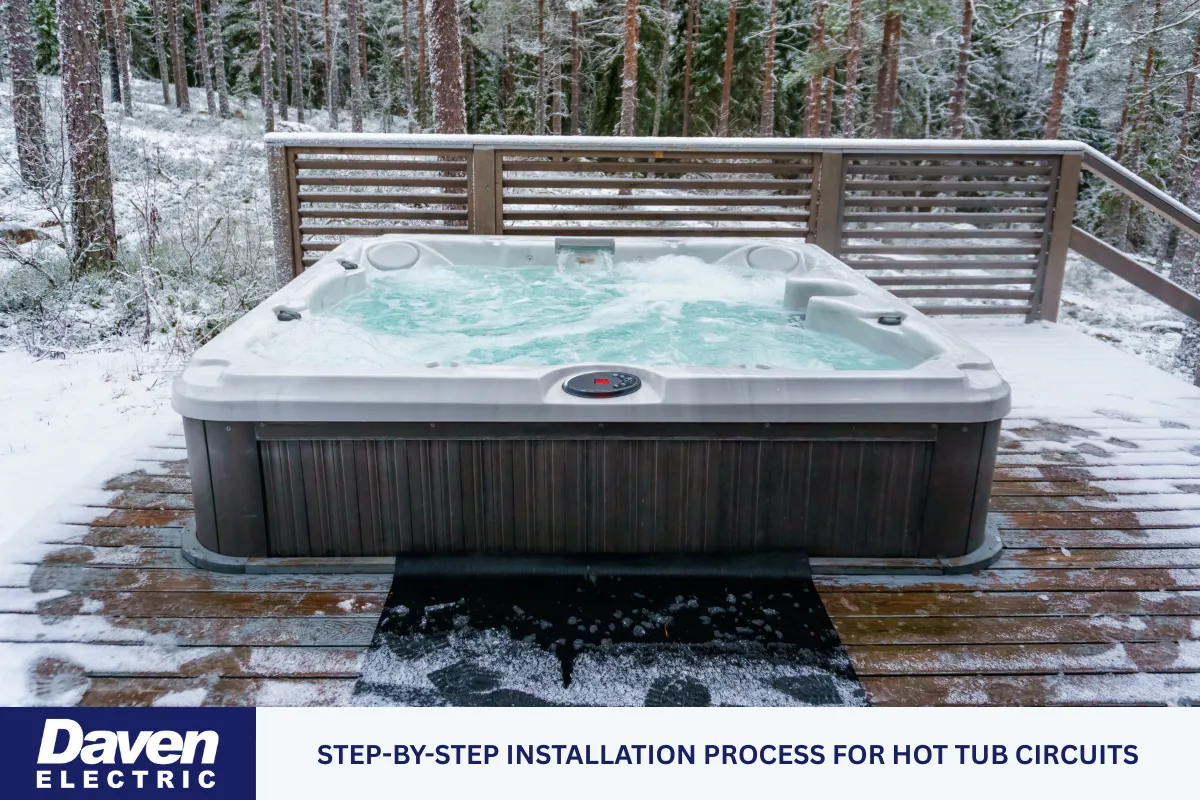
Here’s how a licensed Brooklyn electrician typically installs a hot tub circuit:
- Site Assessment – Evaluate the hot tub location, distance to the panel, and required amperage.
- Permit Filing – Submit project plans to the NYC Department of Buildings.
- Panel Inspection – Confirm there’s enough space and capacity in the main electrical panel.
- Circuit Design – Select breaker size, wire gauge, and conduit routing.
- Conduit Installation – Install outdoor-rated conduit to protect all wires.
- Disconnect Box Installation – Mount and wire a waterproof disconnect box at a proper distance.
- GFCI Breaker Installation – Set up a GFCI-protected breaker inside the main panel.
- System Connection – Wire the hot tub and test all components.
- City Inspection – Pass the final electrical inspection before energizing the tub.
Each step must be performed in line with local codes and manufacturer instructions, leaving no room for shortcuts or guesswork.
Common Mistakes to Avoid During Installation
Even a simple oversight can delay your project or create hazards. Avoid these frequent errors:
- Using undersized wiring
- Skipping GFCI protection
- Installing outlets or disconnects too close to water
- Using non-weatherproof components
- Sharing the circuit with another appliance
- Attempting DIY wiring in a code-restricted city
These missteps not only violate Brooklyn’s building code—they put people at risk.
Electrical Panel Upgrades: What You Need to Know
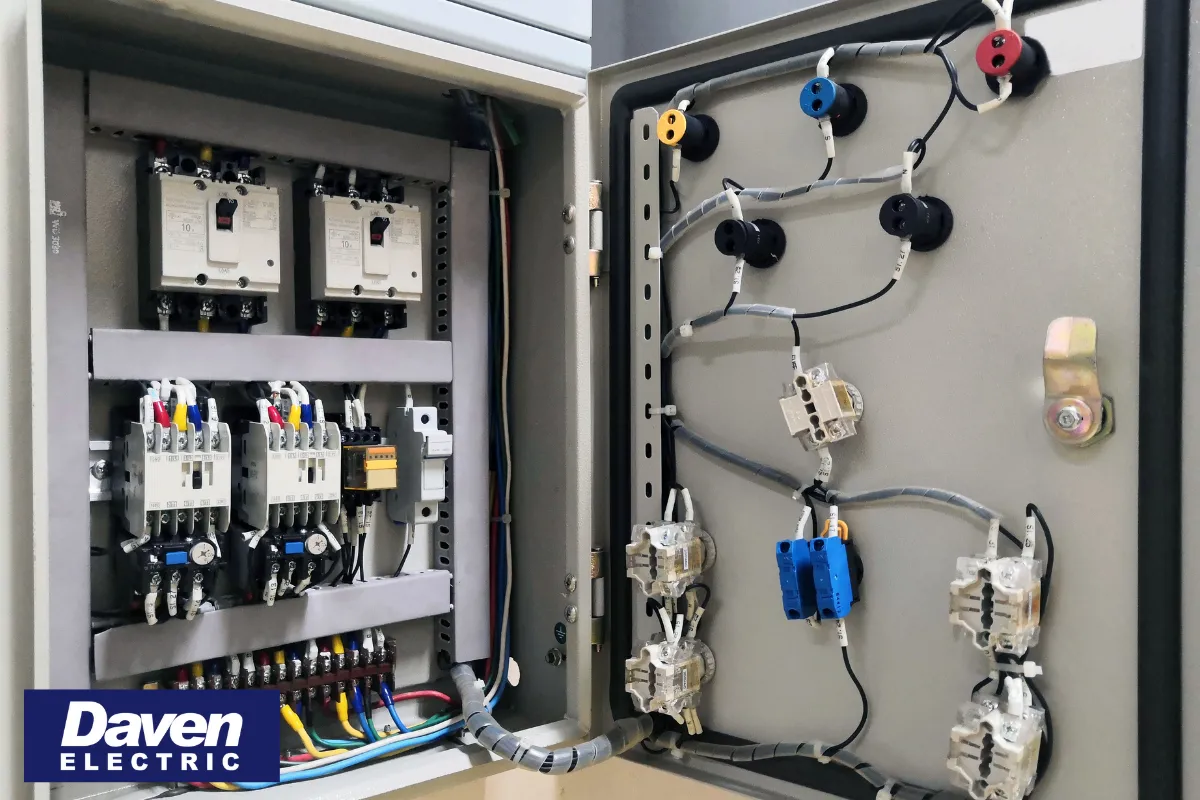
Not all homes are ready to support a hot tub circuit. If your panel is older, overloaded, or lacks space, an upgrade will be required. This could mean installing a sub-panel or completely replacing your main electrical panel.
Modern hot tubs demand stable, high-amperage connections. If your home already supports electric stoves, dryers, or HVAC systems, you may be close to your panel’s limit. A licensed electrician can assess your setup and determine whether a hot tub circuit can be safely added or whether upgrades are needed.
Upgrades are especially common in Brooklyn, where many buildings still use 100-amp panels or fuse boxes.
Final Thoughts on Hot Tub Circuit Requirements in Brooklyn
Getting the right electrical circuit for your hot tub isn’t just a checklist item—it’s a vital part of your installation. From wire size and breaker ratings to outdoor disconnects and permit approvals, every piece matters. A safe, code-compliant system doesn’t just power your hot tub—it protects your home and everyone in it.
Working with a qualified Brooklyn electrician ensures that your installation is smooth, legal, and built to last. It also helps prevent setbacks like failed inspections or costly rewiring. Every component should be chosen and installed with care, following all city guidelines and safety rules. A properly powered hot tub means you can relax without worrying about the risks behind the scenes.
Brooklyn Electrician – Daven Electric Corp.
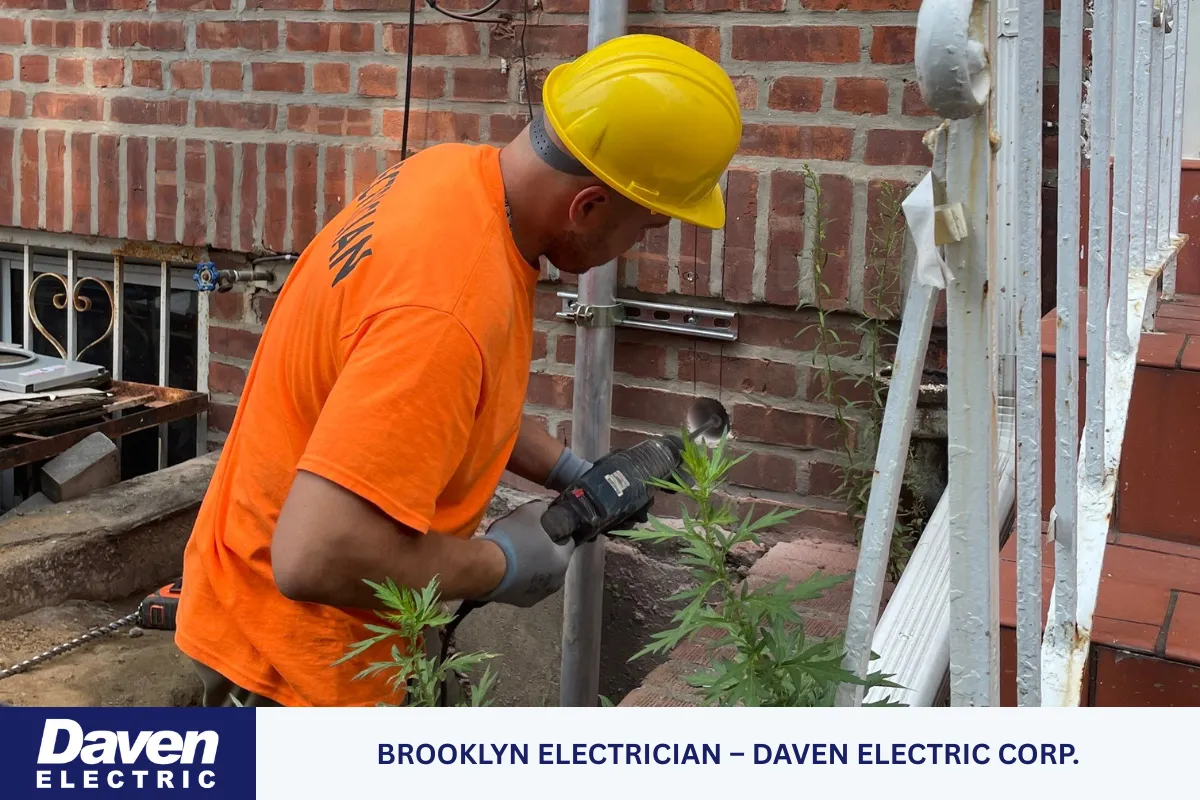
Need a safe and reliable hot tub electrical setup in Brooklyn? Daven Electric Corp. can help! We offer professional electrical installation services tailored for residential, commercial, and multi-dwelling buildings. From installing 240V circuits to upgrading outdated panels, we make sure every part of your hot tub system is done correctly and up to code.
We’re equipped to handle any size project, and we make the process simple from start to finish. Our team works fast, clean, and follows every Brooklyn regulation to ensure a smooth inspection. Let us take the stress out of your next hot tub installation.
Call us today at (212) 390-1106 and let us deliver the safe, high-quality electrical solution your home deserves.
Frequently Asked Questions
What is the correct type of wire for hot tub wiring?
The most commonly used wire type for hot tub wiring is copper wire because of its high conductivity and durability. For a 240V hot tub, copper wire with a gauge size of #6 or #8 is typical, but the amperage rating and distance from the breaker box can affect the required size. Long runs may require a thicker wire to reduce voltage drop and maintain efficiency.
Always use insulated, THHN-rated copper wire approved for wet locations. Wires must be enclosed in PVC conduit or metal conduit pipe to protect against moisture, impact, and temperature extremes—especially in outdoor setups. All connections must be made within an approved junction box or Spa panel.
Following the National Electrical Code, Brooklyn electricians always install a dedicated circuit with appropriate safety devices, including a GFCI outlet, to prevent electric shock. Extension cords should never be used for any hot tub electrical connection.
Can I use an extension cord for a hot tub?
No, using an extension cord to power a hot tub is extremely unsafe and a code violation. Hot tubs draw high electrical loads, and extension cords are not designed to handle sustained high amperage or exposure to outdoor elements.
This creates serious risks like:
- Overheating the cord
- Voltage drops
- Increased risk of power outage
- Fire or electrocution
All hot tub wiring must be permanently connected through a dedicated circuit breaker, with proper electrical setup including a ground wire, GFCI outlet, and service disconnect switch. The conduit size and pipe type (such as PVC conduit or metallic conduit) must also comply with local building codes in Brooklyn, NY.
Proper installations require wiring directly from the breaker box to a Spa panel or control panel, using code-approved materials. A licensed Brooklyn electrician ensures all safety standards are met so your system is both legal and hazard-free.
What role does a GFCI outlet play in hot tub installations?
A GFCI outlet (Ground Fault Circuit Interrupter) is one of the most vital safety devices in any hot tub installation. It detects small imbalances in electrical current—often as little as 4 to 6 milliamps—and immediately shuts off power to prevent shocks or electrocution.
According to the National Electrical Code, all hot tubs must be protected by a GFCI, whether it’s located at the Spa panel, breaker box, or integrated within the electrical connection itself. In outdoor installations, this outlet must be enclosed in a weatherproof cover to protect against rain, snow, and humidity.
The GFCI must be installed at a safe distance (typically at least 5 feet away from the water) and must be tested monthly. In Brooklyn, a licensed electrician will usually install a service disconnect switch and ensure the ground wire is properly bonded to all exposed metal components.
How does the circuit breaker size affect the hot tub’s performance?
The circuit breaker size directly impacts your hot tub’s functionality and safety. Breakers are designed to trip if the electrical requirements of the connected system exceed safe limits. If the breaker is undersized, it will trip frequently. If oversized, it may not trip in time to prevent damage or fire.
For most 240V hot tubs, a 50-amp breaker is standard, but this can vary based on the electric heater, pump motor, and other components like the control panel or lighting. The amperage rating must match the load outlined in your hot tub’s wiring diagram.
Brooklyn homes with older breaker boxes may require upgrades or new dedicated lines to accommodate the hot tub’s power needs. Licensed electricians will also check copper wire size, conduit pipe type, and compliance with local building codes to ensure full functionality and safety during continuous use.
What is a Spa Panel and why is it necessary?
A Spa panel is a special subpanel used exclusively for hot tubs. It contains a GFCI circuit breaker and acts as a service disconnect switch, allowing you to shut off power during maintenance or emergencies. The National Electrical Code requires this panel for all hot tubs that use 240V electrical service.
It serves multiple functions:
- Protects the hot tub with GFCI safety
- Simplifies inspections by isolating the spa’s power
- Keeps power accessible at the site (must be 5–10 feet from the tub)
- Meets safety standards for emergency access
The Spa panel is usually mounted outside and must have a weatherproof cover. It connects directly to the breaker box via conduit pipe, with wires running to the hot tub’s control panel. A Brooklyn electrician will ensure that the circuit breaker, copper wire, and conduit all match the spa’s electrical requirements.
Read more: Signs You Need a Commercial Electrician in Manhattan, NY to Check for Electrical Code Issues

